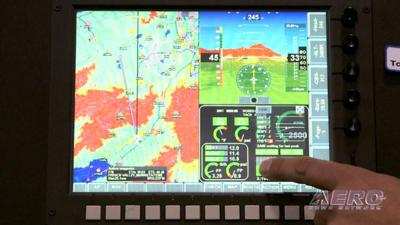Fri, Jan 03, 2020
But DOT OIG Finds The FAA Must Address Airspace Access Issues
The DOT Office of Inspector General (OIG) has released the findings of an audit that had been requested by then-Chairman Bill Shuster (R-PA) and Frank LoBiondo (R-NJ) when they led the House Committee on Transportation and Infrastructure and its Subcommittee on Aviation.

Citing concerns about whether operators will meet the 2020 deadline, the then-Chairmen of the House Committee on Transportation and Infrastructure and its Aviation Subcommittee requested that the OIG provide information regarding equipage rates for ADS-B and other NextGen technologies on air carrier and general aviation aircraft. Accordingly, our audit objectives were to (1) determine the equipage rates for ADS-B and other NextGen-enabling technologies on commercial and general aviation aircraft, (2) ascertain the reasons behind aircraft operators’ decisions to equip or not equip with these technologies, and (3) assess FAA and aircraft operators’ plans to meet the 2020 ADS-B Out equipage deadline.
In the audit, the OIG found that ADS-B Out equipage rates increased as the 2020 deadline approached, with other equipage rates varying depending on the NextGen technology. In addition, operators are installing ADS-B Out primarily due to the mandate but also consider financial and operational factors when equipping with NextGen technologies, such as potential benefits. Finally, most commercial and turbine-powered general aviation operators who will fly in ADS-B Out airspace planned on meeting the 2020 deadline. However, FAA has not finalized procedures needed by non-equipped operators to access ADS-B Out airspace.
The OIG made three recommendations to the FAA concerning having the necessary systems and procedures in place so operators can access ADS-B Out required airspace. The FAA concurred with two of the recommendations and provided appropriate planned actions and completion dates. It did not concur with one recommendation to analyze the feasibility of developing automated systems to provide operators with more timely information regarding GPS outages or degradation. The Agency concluded that developing these additional systems is redundant and an inefficient use of resources. Based on its response, we believe that the FAA has assessed the feasibility of developing automated systems as noted in recommendation 2. Therefore, this recommendation is considered closed.
(Source: DOT OIG. Image from file)
More News
From 2014 (YouTube Version): Innovative Aerodynamic Technologies Produce Game-Changing Results At the NBAA 2013 convention, ANN CEO and Editor-In-Chief, Jim Campbell had a chance t>[...]
“This plan opens insurance options to a much wider variety of Canadian aviators across the country who have otherwise had more challenges with securing insurance coverage... >[...]
Taxi The movement of an airplane under its own power on the surface of an airport (14 CFR section 135.100 [Note]). Also, it describes the surface movement of helicopters equipped w>[...]
Aero Linx: The Vertical Flight Society (VFS) The Vertical Flight Society, formerly the American Helicopter Society, is the non-profit technical society for the advancement of verti>[...]
Also: Sustainable Aircraft Test Put Aside, More Falcon 9 Ops, Wyoming ANG Rescue, Oreo Cookie Into Orbit Joby Aviation has reason to celebrate, recently completing its first full t>[...]
 Classic Aero-TV: Active Winglets -- Tamarack Aerospace Partners with Cessna
Classic Aero-TV: Active Winglets -- Tamarack Aerospace Partners with Cessna Aero-News: Quote of the Day (05.03.25)
Aero-News: Quote of the Day (05.03.25) ANN's Daily Aero-Term (05.03.25): Taxi
ANN's Daily Aero-Term (05.03.25): Taxi ANN's Daily Aero-Linx (05.03.25)
ANN's Daily Aero-Linx (05.03.25) Airborne 05.02.25: Joby Crewed Milestone, Diamond Club, Canadian Pilot Insurance
Airborne 05.02.25: Joby Crewed Milestone, Diamond Club, Canadian Pilot Insurance



